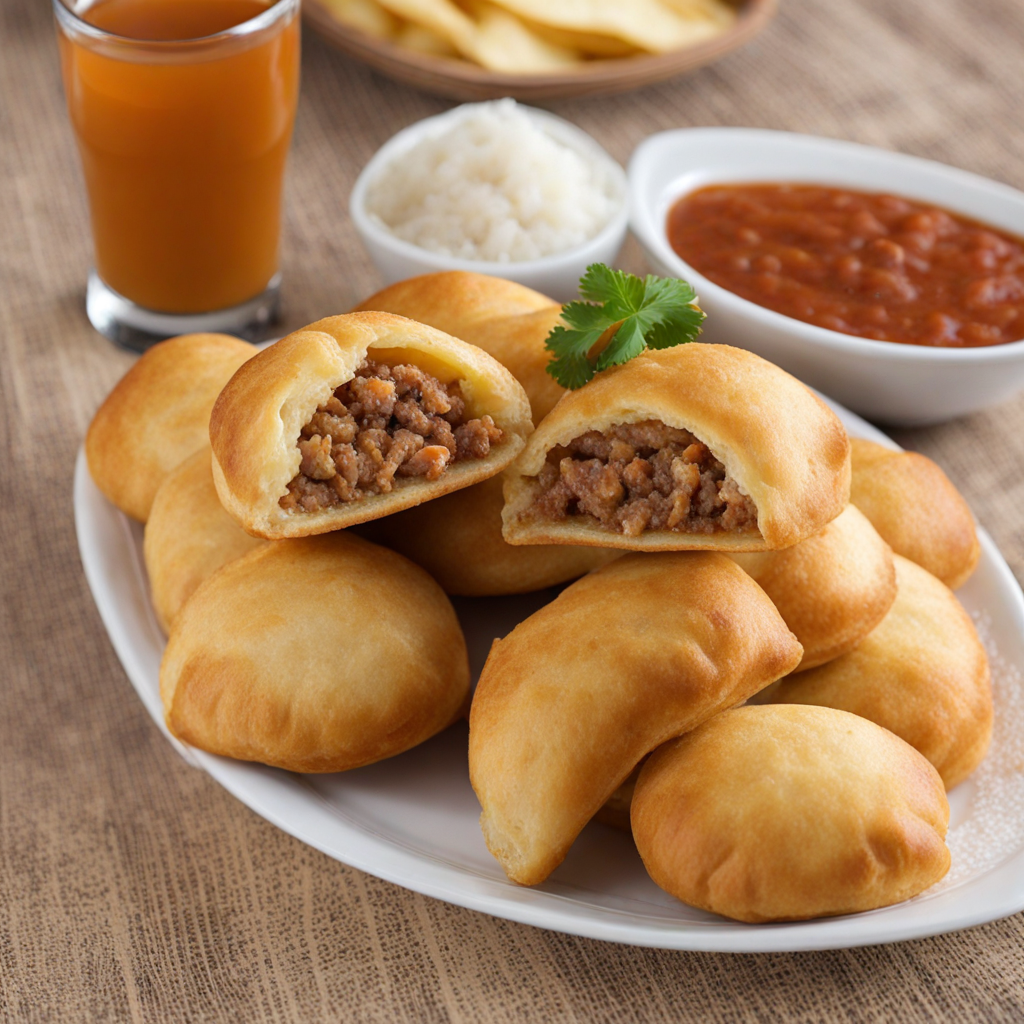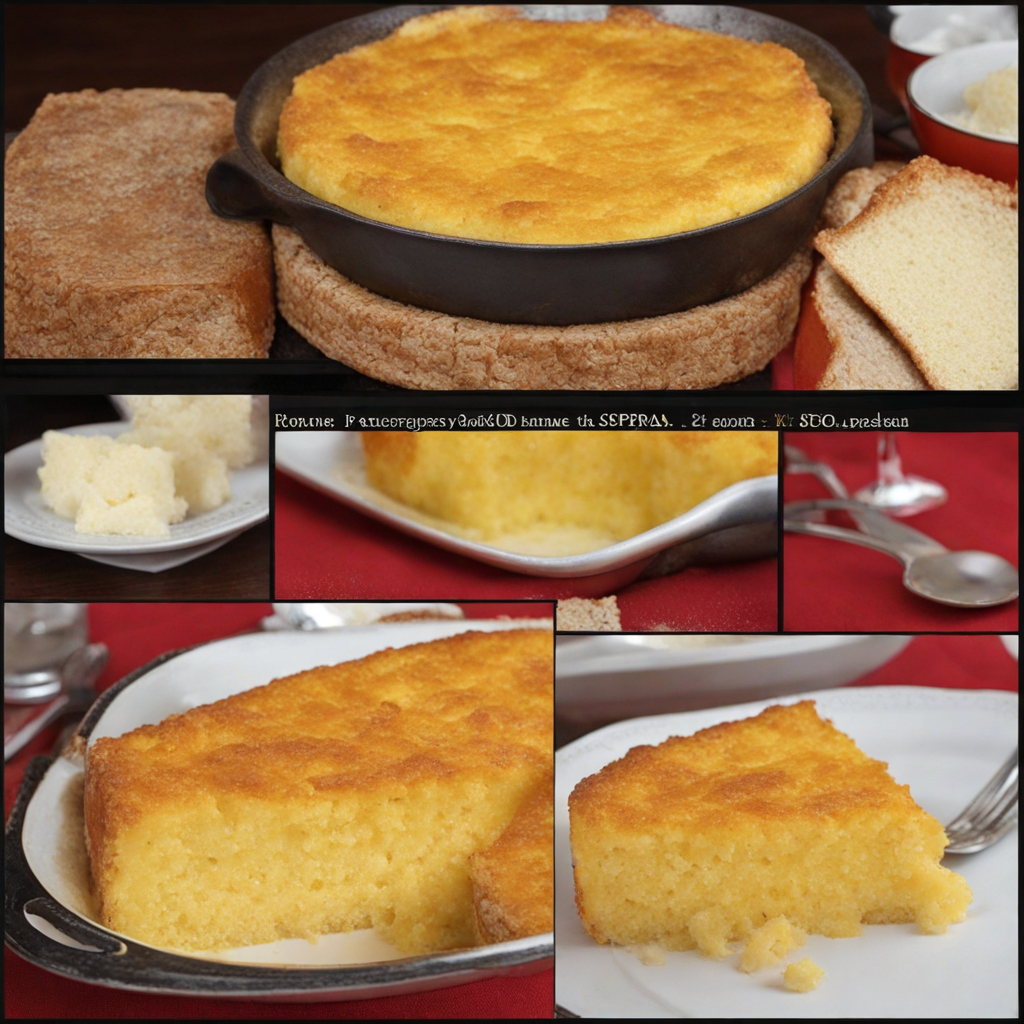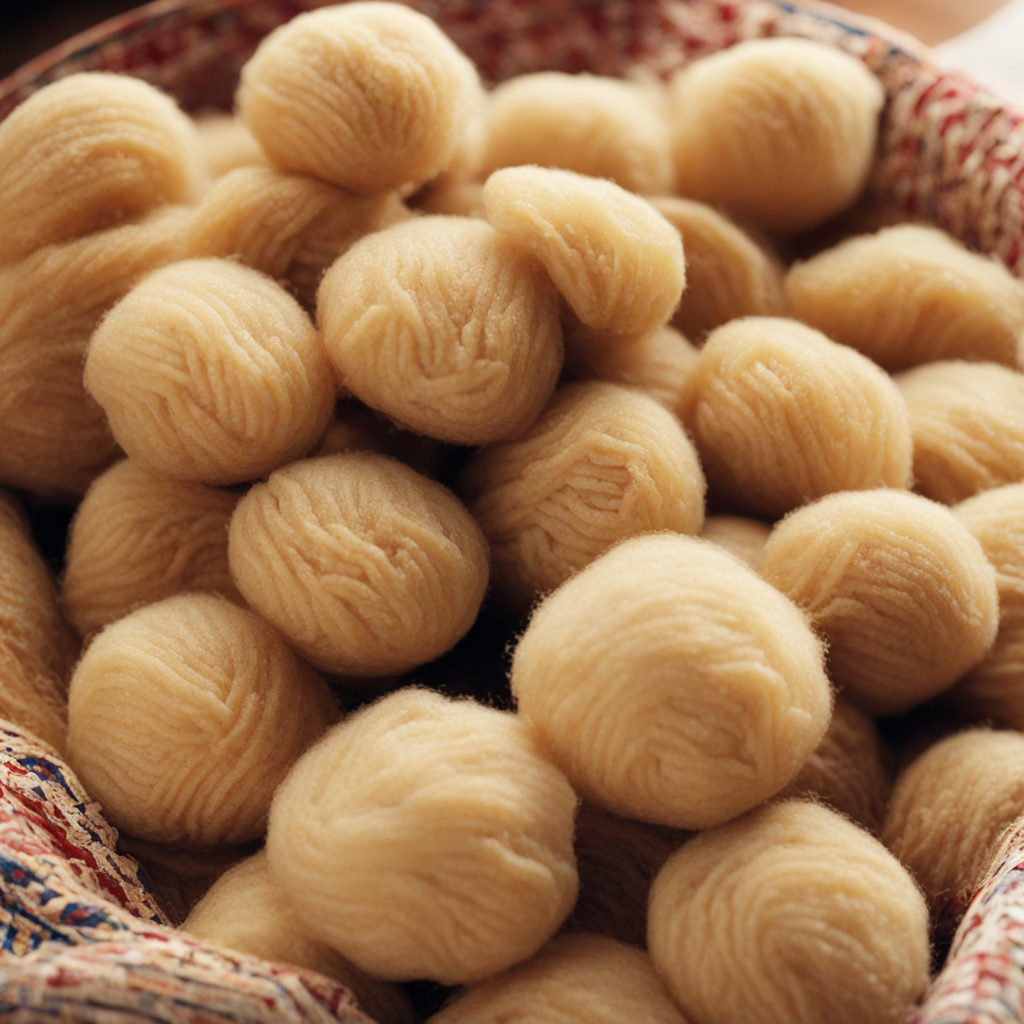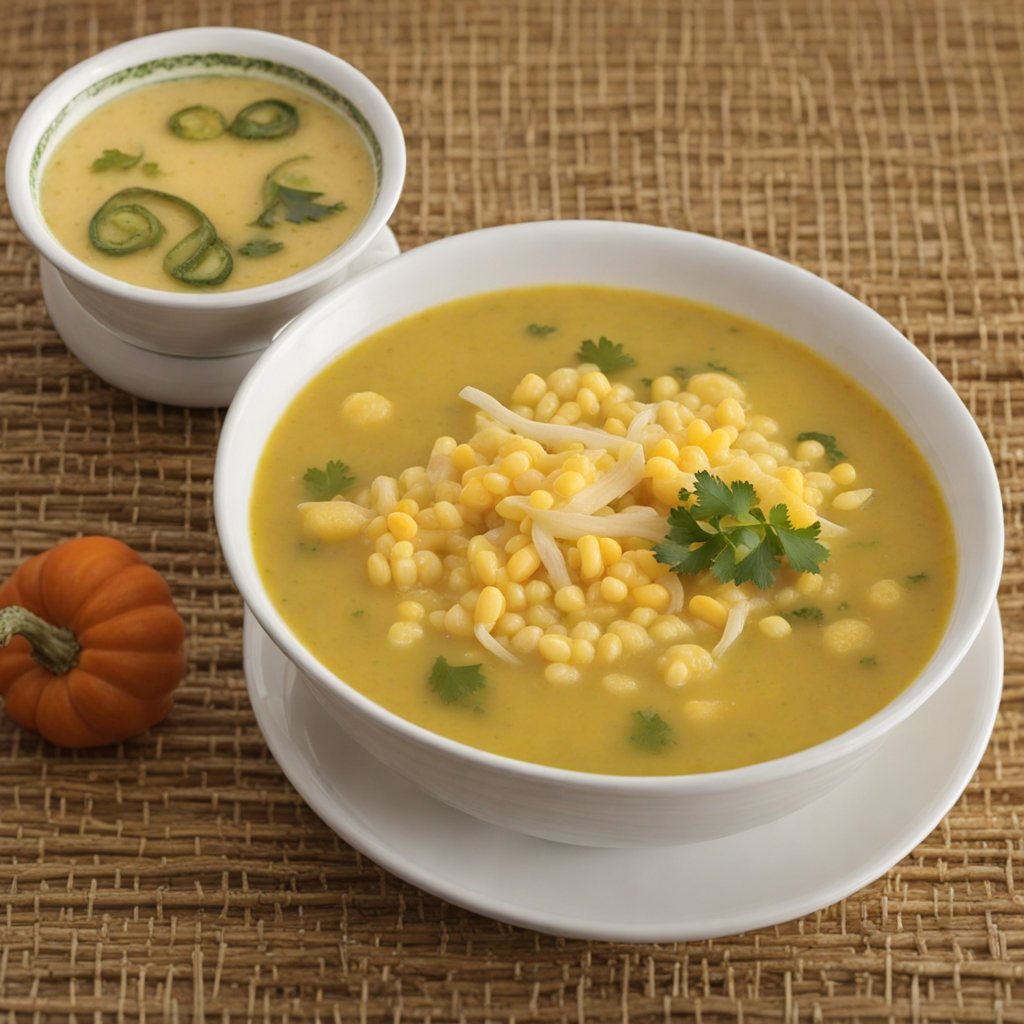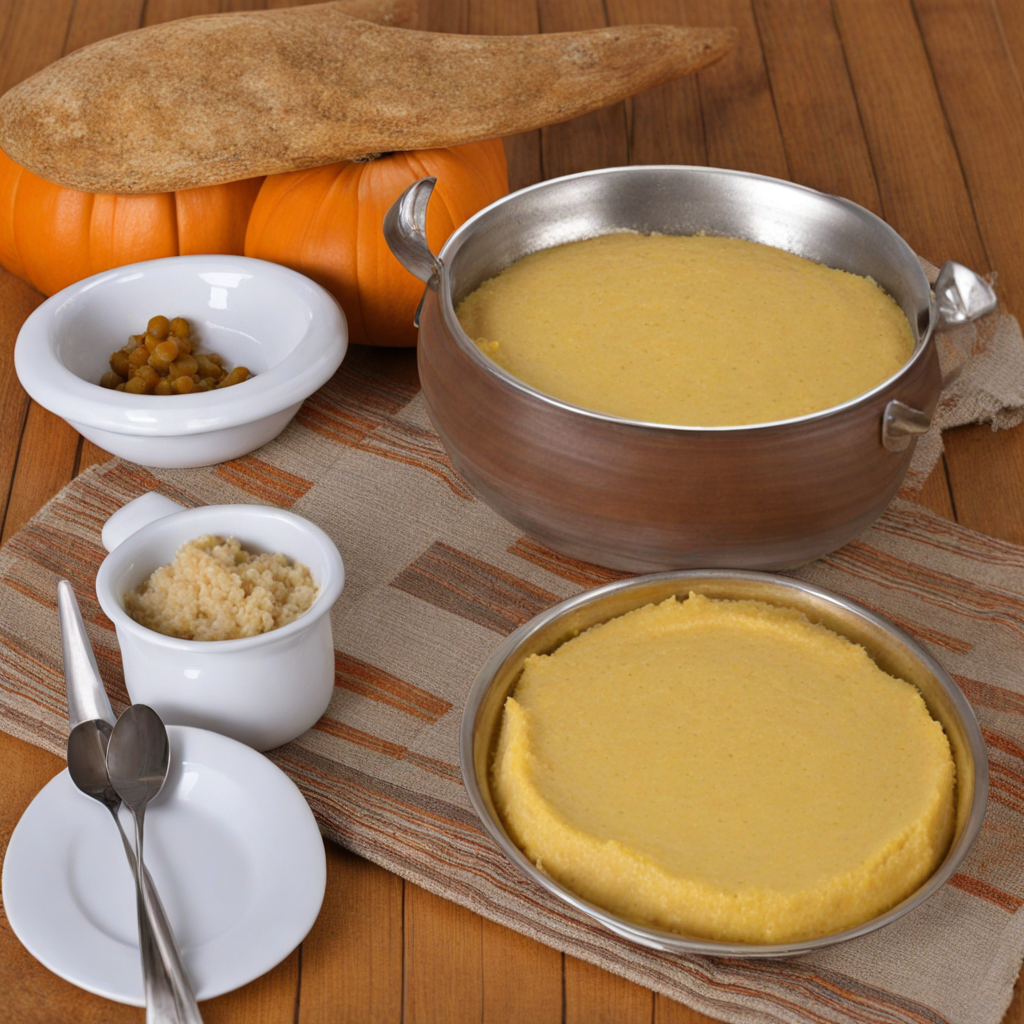Chipa So'o
Chipa So'o is a delightful traditional dish from Paraguay that showcases the country's rich culinary heritage. This savory treat is essentially a type of empanada or pastry filled with a delicious mixture of meats, commonly beef or chicken, along with onions, cheese, and spices. The dough is made from a blend of cassava flour and cornmeal, which gives it a unique texture that is both tender and slightly chewy. The combination of ingredients creates a warm, hearty flavor profile that is both comforting and satisfying, making it a popular choice for snacks or light meals. The preparation of Chipa So'o involves careful attention to detail. The filling is typically sautéed to enhance the flavors, with the onions caramelizing to add a touch of sweetness that complements the savory meat. Once the filling is ready, it is encased in the dough, which is then shaped into small, hand-held pastries. These are baked until they reach a golden-brown hue, resulting in a crispy exterior that gives way to the rich and flavorful filling inside. Each bite is a delightful contrast of textures and tastes, with the warmth of the spices and the creaminess of the cheese melding beautifully. Chipa So'o is often enjoyed with a side of Paraguayan tea, known as tereré, or simply on its own as a quick snack. Its versatility makes it suitable for various occasions, whether served at family gatherings, street food stalls, or as a delightful appetizer. Discovering Chipa So'o is not just about tasting a new dish; it's about experiencing the heart of Paraguayan culture and the joy of sharing food with loved ones.
How It Became This Dish
Chipa So'o: A Culinary Treasure of Paraguay #### Origins and Historical Context Chipa So'o, a delectable stuffed cornbread, is emblematic of Paraguayan cuisine, showcasing the nation’s rich cultural heritage and agricultural bounty. The origins of Chipa So'o can be traced back to the indigenous Guaraní people, who have inhabited the region for centuries. The Guaraní were adept at cultivating maize, a crop central to their diet, and they utilized it in various forms, including the preparation of flatbreads and other corn-based dishes. As the Spanish colonizers arrived in the 16th century, they brought with them new culinary influences and ingredients, such as cheese and meat. This fusion of Indigenous and European elements laid the groundwork for modern Paraguayan cuisine, and Chipa So'o is a prime example of this cultural amalgamation. The term "chipa" itself is derived from the Guaraní word "chipa," which refers to bread made from maize, while "so'o" means meat, indicating the dish's defining characteristic: a savory filling. #### Cultural Significance Chipa So'o is not just a popular snack or meal; it is a cultural symbol deeply embedded in Paraguayan identity. Traditionally enjoyed during festivals, religious celebrations, and family gatherings, this dish embodies the spirit of community and hospitality. In Paraguay, food is often a communal experience, and Chipa So'o serves as a centerpiece for gatherings, bringing people together over shared flavors and stories. The preparation of Chipa So'o often involves family participation, with generations coming together to create this beloved dish. This practice reinforces familial bonds and the passing down of culinary traditions. Each family may have its own unique recipe, incorporating various types of cheese or meat, which adds to the dish's regional variations and personal significance. It is common to find Chipa So'o served alongside tereré, a traditional Paraguayan drink made from yerba mate, creating a quintessential Paraguayan experience. #### The Recipe and Variations The basic components of Chipa So'o include masa (corn dough), cheese, and a variety of meats, typically beef or chicken. The dough is prepared using corn flour mixed with cheese, eggs, and sometimes milk or butter, creating a rich and pliable texture. The filling can vary widely, allowing for creativity and personalization, with some variations incorporating spices and herbs for added flavor. While the classic Chipa So'o is made with a simple filling, modern adaptations have emerged. Some cooks experiment with different cheeses, such as Paraguay's famous "queso Paraguay," which is known for its unique flavor profile. Others may add vegetables, such as bell peppers or onions, or even experiment with international ingredients, reflecting the evolving nature of culinary practices in a globalized world. #### Development Over Time The evolution of Chipa So'o mirrors broader trends in Paraguayan society. In the 19th and early 20th centuries, as Paraguay underwent significant political and social transformations, traditional food practices remained a source of cultural pride. The Chaco War (1932-1935) and subsequent economic challenges led to a greater emphasis on local ingredients and self-sufficiency in cooking. Chipa So'o became a staple not only for its accessibility but also for its ability to be prepared in large quantities for gatherings and celebrations. With the advent of modernization in the late 20th century, there was a shift in dietary patterns, with more people moving to urban areas and embracing fast food. However, the resurgence of interest in traditional foods and culinary heritage in recent years has reignited appreciation for dishes like Chipa So'o. Paraguayans, especially the younger generations, are increasingly exploring their roots and taking pride in the unique flavors of their national cuisine. #### The Role of Chipa So'o in Contemporary Paraguay Today, Chipa So'o holds a cherished place in the culinary landscape of Paraguay. It is commonly found at street fairs, markets, and bakeries, where vendors sell freshly baked versions to passersby. Its popularity extends beyond Paraguay’s borders, with expatriates and food enthusiasts around the world seeking to recreate the dish in their own kitchens, contributing to a growing recognition of Paraguayan cuisine on the global stage. In addition to its deliciousness, Chipa So'o is also seen as a symbol of sustainability. With a focus on local ingredients and traditional cooking methods, it highlights the importance of biodiversity and agricultural practices in Paraguay. As the global community becomes increasingly aware of the environmental impact of food production, dishes like Chipa So'o represent a sustainable approach to eating that honors local agriculture and culinary traditions. #### Conclusion Chipa So'o is more than just a tasty treat; it is a testament to Paraguay’s rich history, cultural identity, and culinary evolution. From its roots in indigenous practices to its current status as a beloved national dish, Chipa So'o encapsulates the spirit of Paraguay—a country that celebrates its past while looking toward the future. As Paraguayans continue to share this dish with pride, Chipa So'o remains a delicious bridge between generations, communities, and cultures, inviting everyone to partake in its flavorful legacy.
You may like
Discover local flavors from Paraguay



